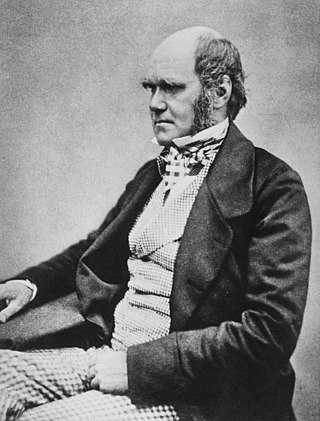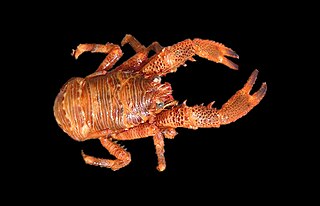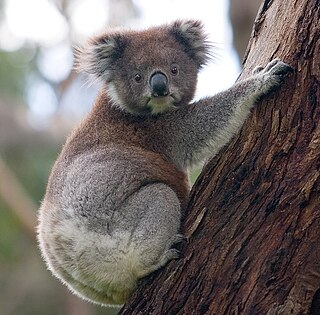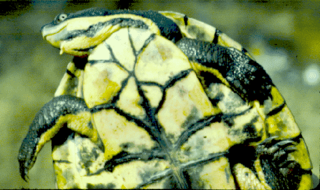
Desmond John MorrisFLS hon. caus. is an English zoologist, ethologist and surrealist painter, as well as a popular author in human sociobiology. He is known for his 1967 book The Naked Ape, and for his television programmes such as Zoo Time.

Theodosius Grigorievich Dobzhansky was an American geneticist and evolutionary biologist. He was a central figure in the field of evolutionary biology for his work in shaping the modern synthesis and also popular for his support and promotion of theistic evolution as a practicing Christian. Born in the Russian Empire, Dobzhansky immigrated to the United States in 1927, aged 27.

The 1967 International and Universal Exposition, commonly known as Expo 67, was a general exhibition from April 28 to October 29, 1967. It was a category one world's fair held in Montreal, Quebec, Canada. It is considered to be one of the most successful World's Fairs of the 20th century with the most attendees to that date and 62 nations participating. It also set the single-day attendance record for a world's fair, with 569,500 visitors on its third day.

Mantis shrimp are carnivorous marine crustaceans of the order Stomatopoda. Stomatopods branched off from other members of the class Malacostraca around 340 million years ago. Mantis shrimp typically grow to around 10 cm (3.9 in) in length, while a few can reach up to 38 cm (15 in). A mantis shrimp's carapace covers only the rear part of the head and the first four segments of the thorax. Varieties range in colour from shades of brown to vivid colours, with more than 520 species of mantis shrimp known. They are among the most important predators in many shallow, tropical and subtropical marine habitats. However, despite being common, they are poorly understood, as many species spend most of their lives sheltering in burrows and holes.

Sir William Jackson Hooker was an English botanist and botanical illustrator, who became the first director of Kew when in 1841 it was recommended to be placed under state ownership as a botanic garden. At Kew he founded the Herbarium and enlarged the gardens and arboretum. The standard author abbreviation Hook. is used to indicate this person as the author when citing a botanical name.

Xanthidae is a family of crabs known as gorilla crabs, mud crabs, pebble crabs or rubble crabs. Xanthid crabs are often brightly coloured and are highly poisonous, containing toxins which are not destroyed by cooking and for which no antidote is known. The toxins are similar to the tetrodotoxin and saxitoxin produced by puffer fish, and may be produced by bacteria in the genus Vibrio living in symbiosis with the crabs, mostly V. alginolyticus and V. parahaemolyticus.

Strombus is a genus of medium to large sea snails, marine gastropod molluscs in the family Strombidae, which comprises the true conchs and their immediate relatives. The genus Strombus was named by Swedish Naturalist Carl Linnaeus in 1758. Around 50 living species were recognized, which vary in size from fairly small to very large. Six species live in the greater Caribbean region, including the queen conch, Strombus gigas, and the West Indian fighting conch, Strombus pugilis. However, since 2006, many species have been assigned to discrete genera. These new genera are, however, not yet found in most textbooks and collector's guides.

Golden Ears Provincial Park is a 555.9 square kilometres (214.6 sq mi) provincial park in British Columbia, Canada. It is named after the prominent twin peaks, which are commonly referred to as Golden Ears. The park was originally part of Garibaldi Provincial Park but was split off as a separate park in 1967. The area was logged extensively in the 1920s by the Lougheed and Abernathy Logging Company. Many recreational attractions are found within the park. Golden Ears Provincial Park is a protected area that contains many endangered species of flora and fauna.

E.C. Manning Provincial Park is a provincial park in British Columbia, Canada. It is usually referred to as Manning Park, although that nomenclature is also used to refer to the resort and ski area at the park's core. The park covers 83,671 hectares (323 mi2) and was the second most visited provincial park in 2017-18 after Cypress Provincial Park. The park lies along British Columbia Highway 3, and occupies a large amount of land between Hope and Princeton along the Canada-United States border.

Charles Robert Darwin was an English naturalist, geologist, and biologist, widely known for his contributions to evolutionary biology. His proposition that all species of life have descended from a common ancestor is now generally accepted and considered a fundamental scientific concept. In a joint publication with Alfred Russel Wallace, he introduced his scientific theory that this branching pattern of evolution resulted from a process he called natural selection, in which the struggle for existence has a similar effect to the artificial selection involved in selective breeding. Darwin has been described as one of the most influential figures in human history and was honoured by burial in Westminster Abbey.
Vaine Wilton Ivie was an American arachnologist, who described hundreds of new species and many new genera of spiders, both under his own name and in collaboration with Ralph Vary Chamberlin. He was employed by the American Museum of Natural History in New York. He also was a supporter of the Technocracy movement.
Rissoides desmaresti is a species of mantis shrimp native to the eastern Atlantic Ocean and Mediterranean Sea.

Galathea is a genus of squat lobsters in the family Galatheidae. It is one of the largest genera of squat lobsters that in 2008 contained 73 species. Most species of Galathea live in shallow waters.

The drop bear is a hoax in contemporary Australian folklore featuring a predatory, carnivorous version of the koala. This imaginary animal is commonly spoken about in tall tales designed to scare tourists. While koalas are typically docile herbivores, drop bears are described as unusually large and vicious marsupials that inhabit treetops and attack unsuspecting people that walk beneath them by dropping onto their heads from above.

The Myuchelys is a genus of turtles, the Australian saw-shelled turtles, in the family Chelidae and subfamily Chelodininae. They inhabit the headwaters and tributaries of rivers within their range and this led to the name Myuchelys, which is formed from the Aboriginal word myuna meaning clear water and the Greek chelys meaning turtle. They have a short neck and the intergular scute completely separates the gular scutes. They have no alveolar ridge separating them from the snapping turtles of the genus Elseya.
Raymond Brendan Manning was an American carcinologist, specialising in alpha taxonomy and mantis shrimp.

Nannosquillidae is a family of stomatopods, comprising the following genera:
Automate branchialis is a species of pistol shrimp from the family Alpheidae which was thought to be a Lessepsian migrant, i.e. a species which had colonised the Mediterranean from the Red Sea via the Suez Canal. This was because before its description in 1958 all the species of the genus Automate were found in the Indo-Pacific region. A. branchialis has not been recorded in the Indo-Pacific region and has been found to be widespread in the Mediterranean so it is now considered to be a Mediterranean endemic.













